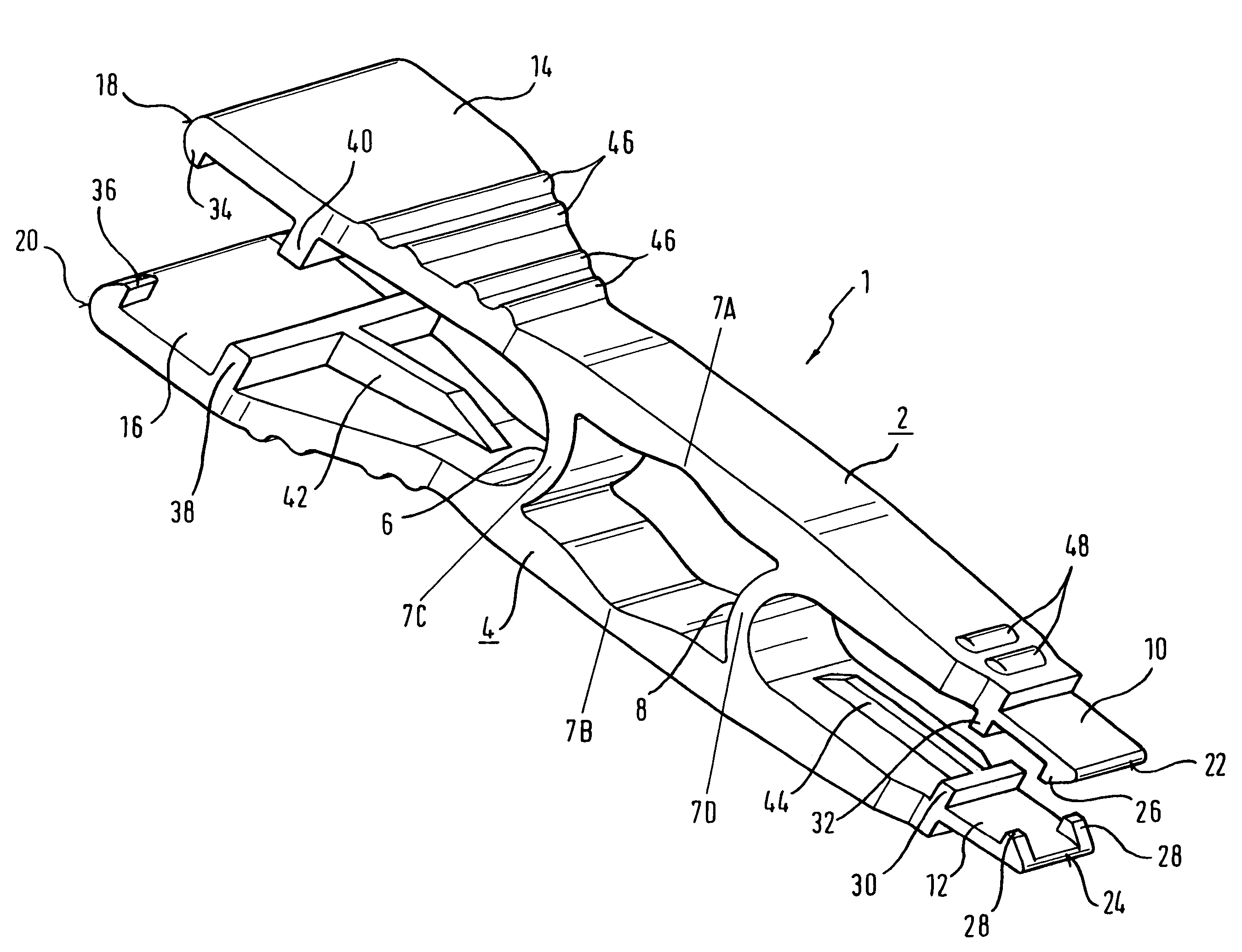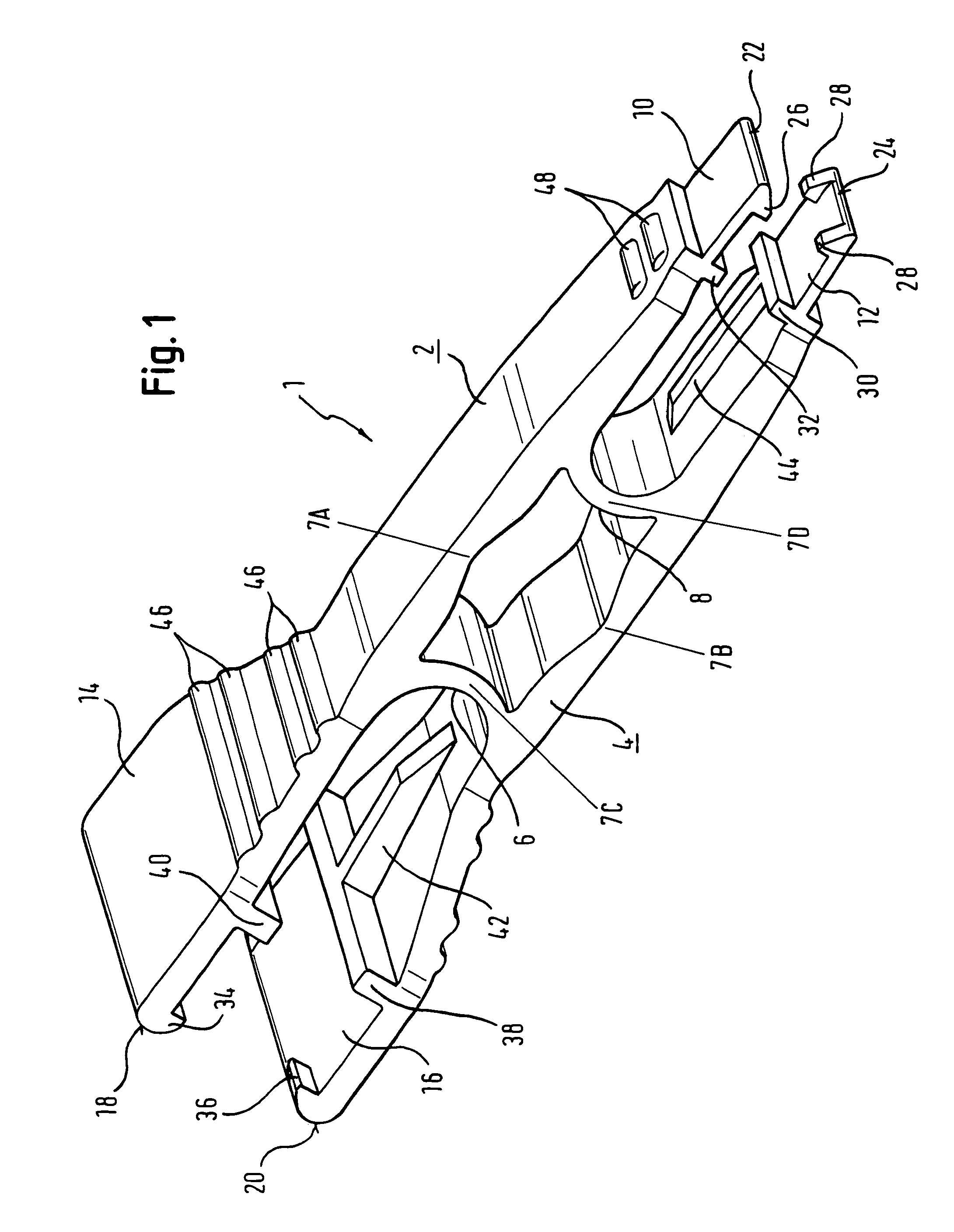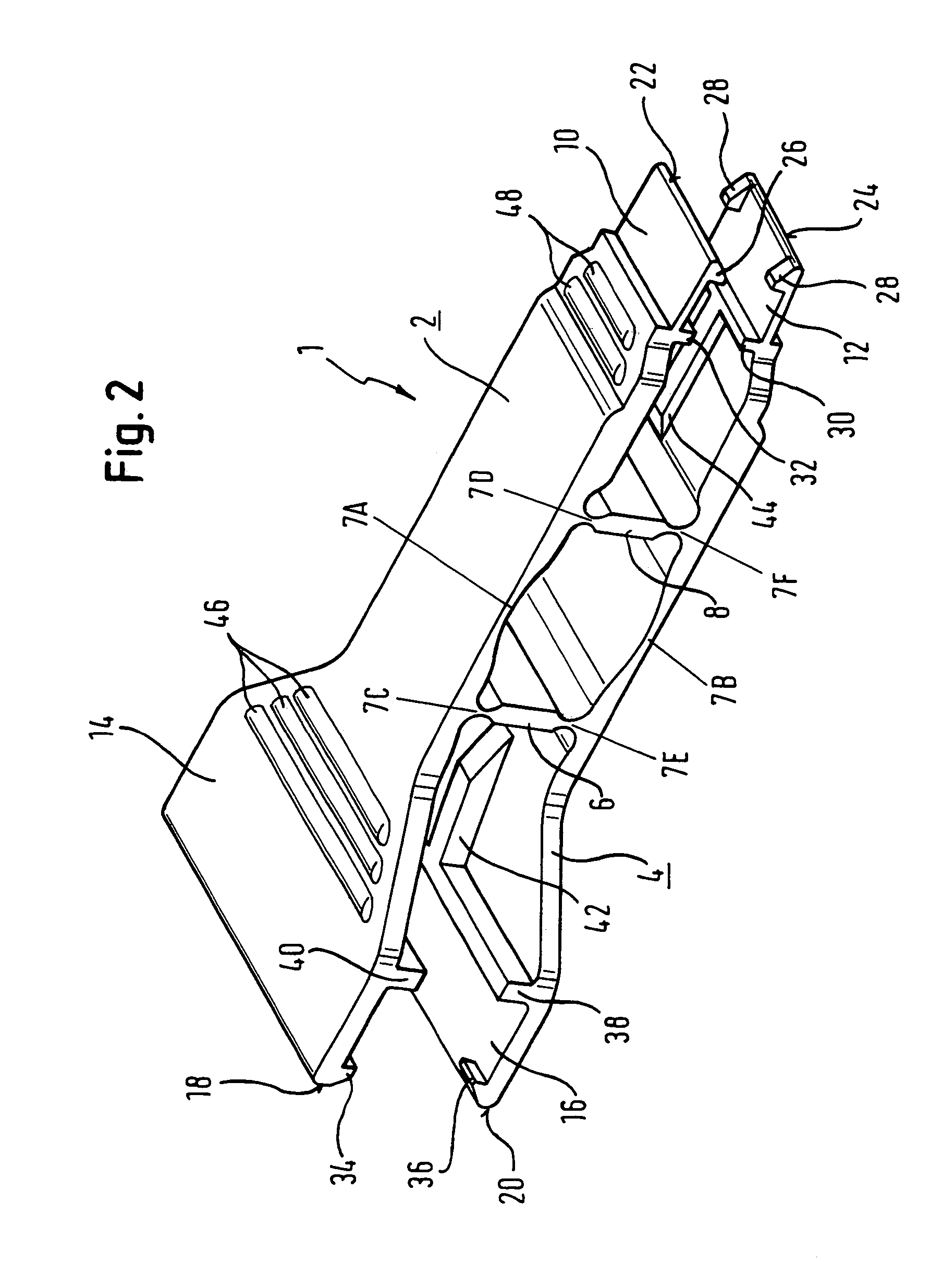Device for removing or inserting a fuse with an improved holding and release mechanism
a technology of holding and release mechanism and device, which is applied in the direction of pliers, electrical equipment, manufacturing tools, etc., can solve the problems of device gripping hooks being detached, the safety of fuse removal no longer guaranteed, and the engendering section or gripping hook provided on the device not staying correctly in the gripping profile of the fuse, etc., to achieve the effect of improving the versatility of the device, saving costs, and improving the force transmission
- Summary
- Abstract
- Description
- Claims
- Application Information
AI Technical Summary
Benefits of technology
Problems solved by technology
Method used
Image
Examples
first embodiment
[0032]FIG. 1 is a perspective view of the removing device according to the invention. The removing device is generally indicated by reference number 1.
[0033]The device has two elongate arms 2, 4 which are substantially arranged parallel to each other. However, also conceivable are arrangements in which the arms are not arranged parallel to each other.
[0034]Arms 2, 4 are connected to each other in a central portion by two connecting sections 6, 8. The connecting sections 6, 8 of the first embodiment of the device according to the invention have a curved shape, whereby the distance of the connecting sections in the longitudinal direction of the arms is shortest in a central portion of the connecting sections. In other words, the first connecting section 8 is curved towards the left end of the device in FIG. 1, while the second connecting section 6 is curved towards the right end of the device in FIG. 1.
[0035]Outside the area of the arms 2, 4 defined by the connecting sections 6, 8, th...
second embodiment
[0050]FIG. 2 shows the removing device according to the invention. However, here only those parts of this embodiment that differ from the embodiment shown in FIG. 1 will be described.
[0051]The second embodiment differs substantially from the first embodiment in the different arrangement of the articulated connections.
[0052]FIG. 2 shows six articulated connections 7A, 7B, 7C, 7D, 7E and 7F. The two articulated connections 7A, 7B hereby correspond to the articulated connections 7A, 7B identified with the same reference numbers in the first embodiment.
[0053]Due to the plate-shaped design of the connecting sections 6, 8, articulated connections 7C, 7E or 7D, 7F are arranged on their edges facing the internal surfaces of the arms 2, 4 which help to achieve the leverage. The application of a pressure force on the proximal end portion of the removing device, preferably on the portion having the ribs 46, causes the proximal half of the portion of the arms 2, 4 defined by the connecting sect...
PUM
| Property | Measurement | Unit |
|---|---|---|
| distance | aaaaa | aaaaa |
| thickness | aaaaa | aaaaa |
| elastic | aaaaa | aaaaa |
Abstract
Description
Claims
Application Information
 Login to View More
Login to View More - Generate Ideas
- Intellectual Property
- Life Sciences
- Materials
- Tech Scout
- Unparalleled Data Quality
- Higher Quality Content
- 60% Fewer Hallucinations
Browse by: Latest US Patents, China's latest patents, Technical Efficacy Thesaurus, Application Domain, Technology Topic, Popular Technical Reports.
© 2025 PatSnap. All rights reserved.Legal|Privacy policy|Modern Slavery Act Transparency Statement|Sitemap|About US| Contact US: help@patsnap.com



